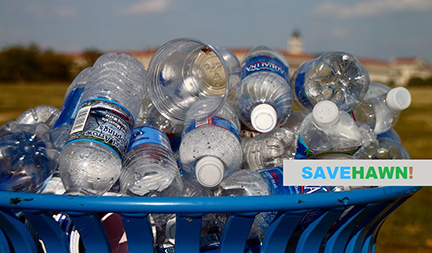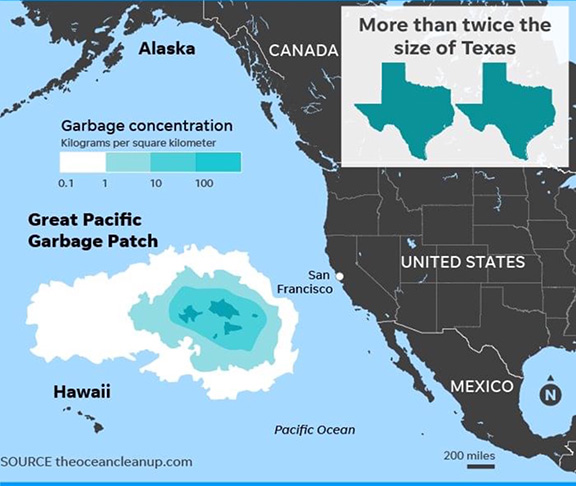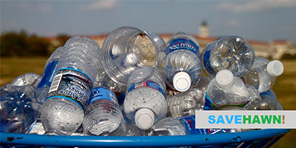by Matt Ankney
The Missouri State Parks’s latest communication about plastic trash clogging and littering our popular public areas blames the individual visitor; not the actual problem: the beverage companies selling single-use plastic bottles by the ton in areas where recycling access is limited and a large portion of collected recyclable refuse ends up in local landfills. Once landfills become full, a common chemical reaction catches the subterranean contents under pressure on fire and can smolder for decades in a toxic scenario St. Louisans endured for years, ruining property values and sickening many residents with rare cancers.

If our state park system was serious about the massive trash problem harming our parks, they would instead draft a letter to the manufacturers of popular single-use containers like soda, water, and tea bottles; reminding the beverage companies the public asked for alternatives decades ago and current underfunded infrastructure cannot handle the constant tsunami of single-use packaging waste. Water bottles can be made from plant-based materials that begin to decompose after use in a few weeks, instead American beverage manufacturers still use virgin plastic from crude oil to make these troublesome containers that do not degrade over time, contaminating entire ecosystems for thousands of miles.
Small particles of plastic are now found in the pristine alpine lakes of Colorado’s Rocky Mountain Wilderness Area over 11,000 feet in altitude, picked up on the wind by evaporation and deposited in the high glacial fed lakes by precipitation. These inaccessible, untouched American wild places I frequent are now degraded by almost invisible man-made pollution falling from the sky, originating in the Great Pacific Garbage Patch thousands of miles away. Cancer causing microplastic particles end up in the air we breathe, our drinking water, and even contaminate our food supply. Just one plastic water bottle alone contains thousands of microplastic particles you drink unaware each time and a recent study suggests we consume around 50,000 microplastic particles in our pre-packaged food annually.
I avoid single-use plastic bottles and bring a reusable stainless steel water container on trips and away from home when needed. Many plastic bottles in the Ozarks falling out of canoe and kayaks, tossed out of truck windows on winding roads, and left in overflowing trash cans in park picnic areas end up travelling downstream and over time deposited into the oceans, eventually collecting on giant floating garbage islands the size of entire countries most notably in the Pacific Ocean.

The Great Pacific Garbage Patch [OC] : dataisbeautiful (reddit.com)
Most rural residents do not have easy access to affordable trash and recycling collection and must resort to burning large portions of their toxic household refuse on a consistent basis because nobody in Missouri has addressed this serious problem showing leadership or articulating any kind of substantial vision for the future in the name of ending the harmful practice of backyard burning. Our state is desperate for a jobs program providing subsidized trash and recycling collection to isolated rural residents who would rather not contaminate parts of their property by continuing these common trash pit fires.

An ironic twist in the Department of Natural Resources’s revived plastic issue is that the state agency tasked with protecting parklands approved a mine next door that could deplete Hawn State Park’s water supply as it taps the local aquifer, necessitating more plastic containers flooding the park, initiating a local trash crisis with landfills over capacity and unnecessary garbage everywhere. The communities of Bonne Terre, Farmington, Fredericktown also share the St. Francois Aquifer the NextGen Silica mine intends to tap, drawing millions and millions of gallons out unsupervised using a process known to deplete groundwater supplies in nearby Brewer, Missouri. What kind of trash nightmare would Southeast Missouri face if several hundred thousand rural residents went dry and all water at homes and local businesses, including wineries, needed to be imported for an extended period of time or maybe even on a permanent basis?

All of this can be avoided. We do not need an open pit mine in this ecologically sensitive area where local families and park owners just want to be left alone, not bullied by selfish special interests and a corrupt state government refusing to follow its own rules, allowing the local population to be preyed upon by greedy, unwelcome industry. At the same time, creating a whole host of new “unforeseen” problems like a trash crisis for us to deal with decades into the future.
For more information about SAVE HAWN! find us on Facebook: SAVE HAWN! | Facebook
Sources:
Microplastics ‘significantly contaminating the air’, scientists warn | Pollution | The Guardian
People eat at least 50,000 plastic particles a year, study finds | Plastics | The Guardian
Open Burning of Trash: A Hidden Toxin (Part One) (waste360.com)
Matt Ankney is an outdoor photographer, accomplished hiker, and Ozark wilderness guide.

